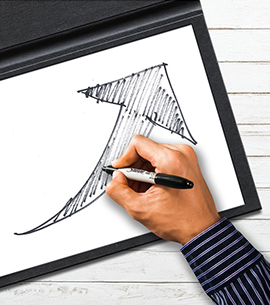The packaging industry has undergone a transformation in recent years due to the rise of e-commerce, the digitalization of the supply chain to meet higher demands for speed and efficiency in goods delivery, and the growing environmental awareness, which is reflected in stricter regulations.
Moreover, the health crisis caused by the Covid-19 pandemic has become another factor with a huge impact on the sector. On one hand, it is accelerating the consolidation of online commerce, and on the other, it has introduced specific elements to consider in the manufacturing and distribution of packaging, such as material choices.
The influence of the health crisis
Before the outbreak of the pandemic that has transformed our lives, the packaging industry was moving in a direction shaped by factors such as:
Stricter government regulations and increased public awareness were prompting manufacturers to take social responsibility in the fight against pollution caused by packaging, both in the production process and at the end of its life cycle. Common trends include: the use of recycled, recyclable, reusable, and biodegradable/compostable materials; reducing the use of fossil raw materials; or designs adapted to the product to avoid excessive packaging and thus minimize waste generation.
Customization
Packaging is a marketing tool, an advertising support that companies increasingly use to attract consumers’ attention and stand out from the competition.
Transparency
Transparent packaging, especially in food, allows the content to be seen, which builds consumer trust.
Functionality
A satisfying user experience encourages loyalty. Packaging should be appropriate for the product, easy to open, correctly sized, and facilitate returns if necessary.
Measures taken due to the Covid-19 pandemic have accelerated and consolidated these trends. Online commerce has grown across all sectors, especially food; and the pharmaceutical sector has seen a surge in demand for protective products against the coronavirus, such as masks and hand sanitizers.
Functionality, with packaging adapted for individual use that offers a good consumption experience (e.g., takeout orders), has become more than a trend—it is a necessity. Also, transparent packaging is essential in fourth and fifth range food products.
In the food sector, a key feature of packaging—emphasized by the pandemic—is its ability to withstand thermal processes with the highest safety standards. Thermoformed plastics can handle sterilization, hot filling, and microwave use.
Regarding sustainability, the health emergency may have initially sidelined this factor, but for the industry to be sustainable economically and environmentally, the use of environmentally friendly materials and the principle of minimal waste must remain on the agenda. Bioplastics, recycled cardboard, and reusable packaging still have a long way to go.
How long will cardboard packaging be used?
Likewise, cardboard has a long future in the packaging industry. The growth of e-commerce, its perception as hygienic and eco-friendly, its versatility for developing diverse solutions, and regulations penalizing non-reusable plastics are all factors supporting the growth of this material.
According to the Spanish Association of Manufacturers of Corrugated Cardboard Packaging (AFCO), production of corrugated cardboard increased by 4.4% in 2019 and a further 0.6% in 2020, reaching 5.552 billion m², marking eight consecutive years of growth (a total increase of 32%).
Hygiene and prevention needs related to the health crisis have driven higher demand for disposable boxes and trays for medical supplies, food, and essential products in social facilities.
Sustainability is key and depends on us. It’s in our hands to embrace a sustainable culture—not just in our direct activities, but also by partnering with environmentally conscious suppliers to care for the planet while ensuring top-quality results.
Will plastic be eliminated?
The benefits that plastic provides in sectors such as food, pharmaceuticals, chemicals, or cosmetics are irreplaceable. As the title of one of our recent articles stated: Unpopular opinion: plastic is necessary. That said, government regulations at both EU and national levels aim to eliminate materials that cannot be recovered for reuse in the supply chain—such as oxo-degradable plastic bags, which are responsible for ocean microplastics.
The EU approved the Single-Use Plastics Directive in 2019, requiring EU countries to implement measures against the most commonly found single-use plastics on European beaches. Under this directive, on Saturday, July 3, the ban takes effect for products like cotton swabs, straws, cutlery, plates, balloon sticks, and expanded polystyrene food and drink containers. In addition, the European Commission is imposing a tax on non-reusable plastic packaging (0.45€/kg) and has set a target of 90% collection of plastic bottles, which must contain at least 30% recycled content by 2030.
Plastic packaging manufacturers are developing new bioplastic materials and enhancing both monomaterial solutions and recycling and reuse practices to comply with new regulations and growing environmental awareness.
Plastic pallets, a rising alternative
The industrial sector is leveraging the benefits of plastic through new applications, such as pallets, traditionally made of wood. Advantages include:
- Lightweight. They weigh 30% less than wooden pallets, reducing transportation costs.
- Hygiene. They are easy to clean and disinfect.
- Long lifespan without deterioration.
- Safe handling. They reduce the risk of accidents.
- Recyclability and ease of reuse.
- Stackability. Plastic pallets are highly durable and stackable, optimizing warehouse space. There are also adhesive solutions to prevent slippage.
Any packaging solution, whether for primary, secondary, or tertiary products, requires a proper marking and coding solution. At UBS, we offer the best printing equipment, optimized to meet any need. Contact us and we’ll study your case.









